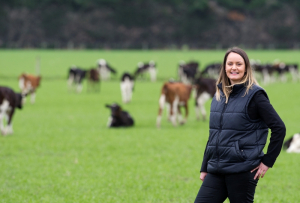In its latest quarterly global dairy report – Dairy Quarterly Q2 2019, Optimism in the midst of chaos, Rabobank says global market fundamentals have remained wellbalanced through the first half of 2019, with stagnant milk supply growth, reduced stocks and price stability continuing to be the key themes permeating across the sector.
“Milk production across the ‘big 7’ exporters (the EU, the US, New Zealand, Australia, Uruguay, Argentina and Brazil) in 2019 was below the prior year, allowing markets to find support, and a sharp finish to the milk production seasons in both New Zealand and Australia, coupled with robust China imports, supported Oceania-origin dairy product prices,” said report co-author, Rabobank dairy analyst Emma Higgins.
Higgins says the outlook through the second half of 2019 points to an ongoing challenge to turn the milk production tap on across key exporting regions.
“Milk production across the export engine has stuttered along in the first half of 2019 with negative growth of 0.3 per cent and this has created tension in the global market,” she says.
“However, the milk supply tap is slowing being turned on, and in quarter three we expect to see the return of milk supply growth for the ‘Big 7’ exporters with this led by the northern hemisphere producers (the EU and US).”
Importantly for New Zealand producers, Higgins says, the bank’s forecast suggests less milk volumes will be available from the southern hemisphere exporting countries over the second half of 2019.
“We expect Oceania dairy commodity prices to rebound off the back of this once we have moved through our seasonal pricing hiatus period,” she says.
“Overall, we expect to see global milk production growth accelerate through into 2020, however, given the outlook for farmer margins, the rate of growth is forecast to remain below one per cent until quarter two, 2020.”
On the demand side, the report says the landscape in import markets remains a mixed bag.
“Chinese import appetite was stronger than expected through the first four months of 2019, and some buyers are likely to have adequate coverage. We anticipate Chinese demand to remain firm, but lower than in the first half of 2019, which may place a ceiling on price increases,” she says.
“Elsewhere, the US economy is heading for a sizeable slowdown in 2020, while the Eurozone economy has been underperforming since 2018, and that has tempered consumer spending and limited growth in dairy demand.”
















